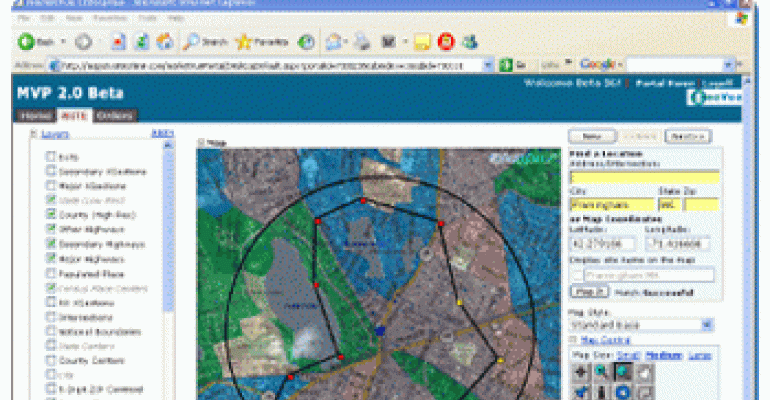Advanced site-selection programs provide business intelligence, too
Site selection technology has come a long way. No longer a simple marriage of maps and demographic data, the technology today arms users with the information they need to make smart business decisions.
"Clients have told us that using business intelligence technology increases productivity and revenue," says Olivia Duane-Adams, a senior executive and founding partner of SRC LLC, an Orange, Ca.-based site selection provider that counts Marcus & Millichap Real Estate Investment Brokerage Co. and Yum!Brands as clients.

“Our products answer business-critical questions such as how a property should be tenanted or how big a development should be,” says Kathy Hueber, president of Asterop Inc., formerly Market Insite Group. Using a mix of public and proprietary data coupled with advanced statistical modeling, the San Francisco-based company can even predict sales and foot traffic at future sites.
From median household income to average drive times, site selection technology allows real estate professionals to visualize a specific site by layering different pieces of data on a map, says Michael Kesselman, co-founder and chief product officer at Woeburn, Mass.-based geoVue.
"Our technology has powerful visualization tools that take information included in a spreadsheet to a different level," Kesselman says. What’s more, mapping data can uncover trends that aren't readily apparent in a spreadsheet or database. For example, a retailer could create a map that uses color-coded dots to classify stores by sales volume, while the areas underneath the dots could be colored to show the median incomes. This information display can help a retailer quickly tell whether it is getting the best performance out of its stores.
Buxton Co., a Fort Worth-based site selection provider, claims it has taken site selection to a higher level by using psychographics. That way, Buxton says it captures information about the behavior and motivation of specific consumers, rather than relying on demographic data, which measure incomes, spending patterns and so forth. "Psychographics drive sales, and by looking at psychographics you're really looking at individual households, not a larger group," explains Buxton principal David Rambie.
Rambie contends that psychographics has an added advantage of steering users away from poor sites — even those that look good from a demographic perspective. Recently, Rambie worked with a restaurant chain that was entering a new market and considering a development with an upscale demographic base. "The income numbers looked good, and all their buddies were going into the development so they had some great co-tenancy," he says. However, when Buxton did an analysis of the trade area, it found that it lacked a critical mass of the restaurant's targeted customer base.
Buxton was able to direct the chain to another location in the same city, and that new location is now the chain's top performer. Moreover, most of the other chains that went to the other center "are dying," Rambie says. "It gets real expensive to guess. It's a lot cheaper to know."

